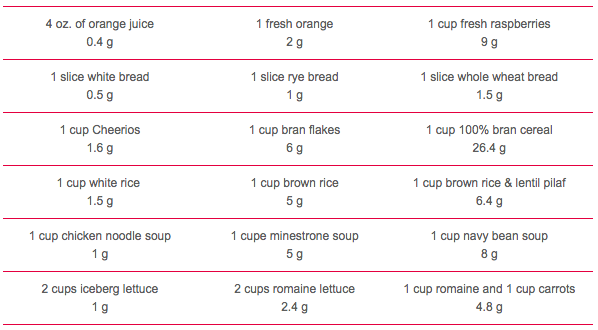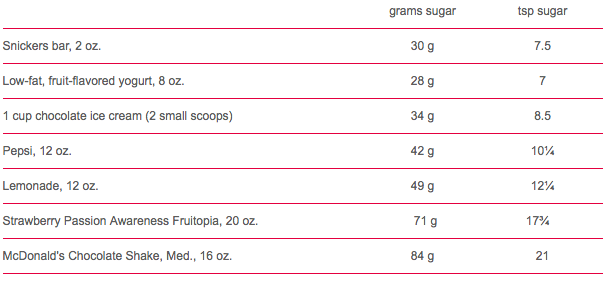Help Your Kids Excel, Soar and Thrive – The Natural Way!

Pump up the “natural” and discard the “processed”

“Natural” means choosing wholesome foods with minimal processing. Whole-grain breads, cereals, rice and pastas instead of white. Eating fresh meats and cheeses instead of processed. Natural means choosing “real” fruits and vegetables and not thinking “fruit-flavored snacks” or “vegetable chips” are healthy alternatives. Wholesome foods generally mean less sugar, fat, sodium and chemicals, and more fiber and nutrients like beneficial antioxidants that our bodies need. Foods close to the farm also help normalize blood sugars and provide greater hunger control than processed and chemically enhanced foods. As I like to say, choosing natural foods means choosing foods with ingredients you can recognize and pronounce.
Keep preservatives, chemical food colorings and flavor enhancers to a low roar
While colorings, additives and preservatives are all FDA-approved, they are NOT all risk-free. For over 10 years now, the Center for Science in the Public Interest (CSPI) reports studies that show various food colorings linked to bladder, brain, thyroid and adrenal cancers, as well as linking to behavior problems in kids. As a result of two 2008 British studies linking food dyes to ADD/ADHD behavior in children, CSPI petitioned the FDA to ban 6 commonly used food dyes. The simple solution? Opt for “natural” foods and you’ll avoid any risks associated with artificial food coloring.
Color their world with fruits and veggies
Make sure the bright colors in their meals and snacks are from natural fruits and vegetables, not artificially colored, “fruit-flavored” snacks and beverages. A 10-year old needs a combined 4 cups of fruits and vegetables every day. Are you eating that much? Are you buying that much? Fresh is best, then frozen, canned and juice. And serve your children 100% fruit juice with no added coloring instead of “fruit drinks” and “ades” loaded with artificial dyes.
Impart the goodness of whole grains
Did you know that whole-grain wheat and oats contain as many beneficial antioxidants as broccoli or carrots? So eat your whole grains for disease-fighting antioxidants in addition to sorely needed fiber. Replacing refined, enriched (white) flour products with whole-grain products also naturally increases your daily fiber intake by as much as 8 grams. This is a great start since Americans should get 30 grams a day and typically fall short by 10-18 grams. To calculate a child’s daily fiber needs in grams, take their age plus 5. Whole-grain bread, pasta and brown rice are all high in fiber. High fiber means high in volume so you fill up faster on fewer calories, creating a natural portion control for the pasta and bread lovers in your family!
Whole-grain products also generally have a lower glycemic index, which means these foods raise your blood sugar less and more slowly, helping with concentration and stamina. Whole grains contain more chromium and magnesium, which is important in sugar metabolism, which helps combat the onset of type 2 diabetes.
Fast Fiber Guide

Enhance their snacks
Everyone wants snacks and treats—even adults—but snacks don’t have to be empty calories loaded with fat, sodium, sugar and nothing else. Instead of a plateful of cookies or a bag of potato chips, try two cookies and an apple or a handful of nuts and an orange. Fruit smoothies with low-fat yogurt make great “healthy” milk shakes for breakfast or snacks; and whole-grain tortilla chips with fresh salsa and bean dip provide a ton of nutrients without a ton of calories. Check out my Benito Bean Dip recipe (on page 27 of my Lickety-Split Meals cookbook) that younger kids can help make and teenagers can prepare themselves.
Turn sugar “hounds” into sugar “watchdogs”
The consumption of sugar in America has increased by 30 percent since 1983, and the consumption of high-fructose corn syrup jumped 1,000 percent from 1970 to 1999. Studies show that 62 percent of Americans are either overweight or obese, and we are at record highs for type 2 diabetes, most alarmingly among children. Sugar not only rides high in candy and desserts, but is also living large in our breakfast cereals, high-protein snacks and fruit snacks. You might be surprised; however, to learn that the leading sugar offenders are in beverages! Just one 12-ounce can of regular soda contains 42 grams of sugar and the same size container of lemonade has even more. The safe upper-limit for sugar consumption recommended by several health organizations is just 30 grams – so we must be diligent watchdogs if we want our children to excel, soar and thrive.
NOTE: Every 4 grams of sugar shown on the food label is the equivalent of 1 teaspoon of sugar.
See How Easily Sugar Adds Up

Quench their thirst with water
Never underestimate the power of staying hydrated. But when kids look to quench their thirst, it’s usually with soda, juice or “power” drinks – when the real power drink is just plain, pure water! Headaches, fatigue and low concentration are often signs of “under-hydration” or dehydration. Get them in the habit of starting their day with a glass of water, since we wake up naturally a bit dehydrated. (That’s why you weigh less first thing in the morning. Health professionals call it your “dry” weight, and it’s ultimately important to replace those lost fluids first thing in the morning.) Try carrying bottles of water in the car for both long and short trips, and I strongly recommend a constant water bottle at their desks and in their school lockers. Relying on the drinking fountain at break time is just not enough. If water is too “boring,” then add a splash of 100% juice or an envelope of TrueLemon, TrueLime, TrueOrange or EmergenC for a little extra flavor. Just avoid artificial sweeteners and dyes. Re-hydrating isn’t just important when participating in sports or being physically active – it’s essential throughout the day.
I hope you can see how choosing natural foods and good clean water can help your kids excel in school, soar in health and thrive in life by eliminating processed foods and artificial ingredients. Go ahead and take advantage of all the essential nutrients natural, wholesome foods have to offer!
